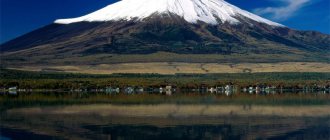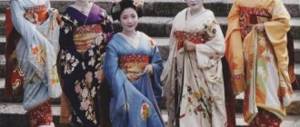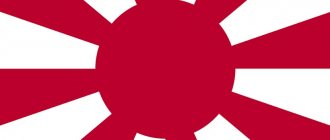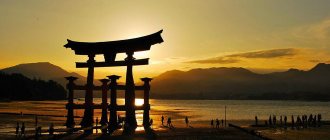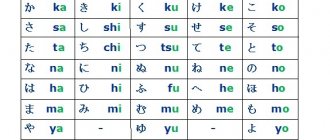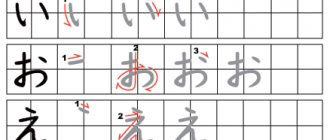Japan's railways are the country's main transport arteries, along with maritime transport. A network of ultra-modern high-speed trains connects most cities in the country, and also serves most domestic routes in metropolitan areas. They are divided into long-distance trains and local lines, which in turn are divided into simple express trains, “limited express trains” and ordinary trains running with all stops. Regardless of the travel distance, all Japanese trains are equipped with soft seats, coffee and soft drink machines, a toilet, a landline telephone and a convenient display in Japanese and English.
For travel by rail, the Japan Rail Pass (valid only for visitors with a tourist visa, purchased in advance), which provides unlimited travel on trains, buses and ferries of the Japan Railways company, as well as on some trains of private companies, within a certain period (one, two or three weeks). The ticket is personal, transferring it to another person is prohibited (during checks you must present a passport to confirm the legality of the purchase).
Intra-city railway lines are distinguished by color, have rather confusing routes, and often depart from the same platforms, so it is worth carefully studying the information stands (they also indicate information about the price of travel to a particular station). The fare is 120-300 JPY, tickets are purchased from special ticket machines at stations (there are often long queues) and are returned when exiting the train at the destination station. There are special electronic “orange cards” worth 1 thousand, 3 thousand, 5 thousand and 10 thousand JPY, which must be inserted into a special machine before the trip and type in the cost of the ticket, and the amount is automatically debited from the card. When moving from a branch owned by one company to a branch of another company, a new ticket is purchased. You can pay extra for the ticket at the destination station.
RAILWAYS are the most important mode of transport in Japan.
The first railway line, 28 km long, was opened in 1872 between Shimbashi (Tokyo) and Yokohama (the locomotive was British-made).
During the early period of modernization, foreign technicians were invited to Japan to train in the construction and operation of railways. These were mainly experts from England, the United States of America and Germany. By 1900, a state railway network had been created throughout the country. Rapid industrialization at the beginning of the 20th century influenced the development of railways in the country. All lines were laid in a narrow gauge version (1067 mm between rails, ).
After World War II, Japan's railways played an important role in the revival of the nation. soon embarked on a path of intense economic development and accelerated urbanization . In this, railways also played an important role, transporting the bulk of the population. Nowadays, Japanese railways are characterized by a high level of technical equipment and management.
The country's railway network is approximately 27,268 km. The JR Group (railroad companies formed after the privatization of Japan National Railways) controls about 20,135 km of this network as of March 31, 1996, with the remaining 7,133 km owned by local private companies.
Japan Railways carries approximately 22.63 billion passengers every year. This amounts to an average of 200 trips per Japanese resident per year.
Shinkansen super express train system has attracted worldwide attention since construction of the Tokaido Shinkansen in 1960. The line opened in October 1964 (on the eve of the Tokyo Olympics) and linked Tokyo with Osaka. The 1435 mm wide track has no level crossings, is characterized by smooth turns and slopes and is intended only for the carriage of passengers. This allows trains to reach speeds of 200 km/h. Shinkansen lines were built , including San'yō, Tōhoku, and Jōetsu. The bullet train lines now total 2,153.9 km, and Japanese trains carry about 275 million passengers annually.
Since the 60s. Railways began to experience increasing competition from road and air transport.
By 1980, JNR National Roads, with approximately 400,000 employees, was experiencing an annual deficit of over 1 billion yen. The privatization of the national railway network in 1987 helped solve the problem by dividing them into several companies.
In 1997, the West Japan Railway Company introduced a new type of Shinkansen super express train with a maximum speed of 300 km/h. Their average speed between stations on March 22, 1997 was 261.8 km/h. In November 1997, the new Nozomi model train covered the 1069 km separating Tokyo and Hakata in 4 hours 49 minutes.
The Central Japan Railway Company and the RTRI Foundation (Railway Technology Institute) have been conducting experiments for many years to test magnetic levitation trains using the principle of superconductivity. Theoretically, they can reach speeds of 650 km/h. The experiments reached a decisive stage in May 1997. If this dream becomes a reality, passengers will be able to travel from Tokyo to Osaka in just one hour through the mountainous regions of Central Japan.
Meanwhile, the Shinkansen continue to spread to more and more corners of the country. In October 1997, ahead of the opening of the Winter Olympics in February 1998, the first phase of the Shinkansen , linking Takasaki (northwest Tokyo) with Nagano. The fastest train on this line, the Asama, has a top speed of 275 km/h.
In the 32 years of operation of the Shinkansen , there have never been any serious accidents. They depart at intervals of 5 or 6 minutes every morning and every evening. In major urban centers, commuter trains to neighboring cities pass over the same section of track every 2–3 minutes.
Local private companies (non-JR group railways) carry 60% of passengers throughout Japan , 96% of which go to large urban centers or surrounding areas. It is obvious that the congestion of Japanese urban transport without commuter trains would be much greater.
The scene is like something out of a science fiction film: the new express, thanks to its 15-meter nose, is more reminiscent of a spaceship. Today, the new Japanese Hayabusa express train covered the 700 kilometers separating Tokyo and Aomori in 3 hours and 10 minutes, accelerating in some sections up to 300 kilometers per hour (in the future - up to 320).
Japan's Shinkansen high-speed trains are a symbol of the country's technological power. But they appeared 46 years ago, and the last time a new model was launched was in 1995. And the nimble Chinese took the lead: their “Harmony” accelerates to 350 kilometers per hour.
Hayabusa's first class ticket costs $320. For this you can get genuine leather seats and unlimited access to alcohol and snacks. However, for the first trip, all luxury tickets were booked via the Internet in 20 seconds by scalpers in order to resell them to railway fanatics for 3-4 thousand dollars.
The authorities even want to make the tickets personal in order to stop abuses, NTV reports.
The E5 series electric train of the Shinkansen network is an electric train being built for the Japanese Shinkansen high-speed railway network . Construction began in 2009 and was put into operation on March 5, 2011. The service was named Hayabusa (Peregrine Falcon) . There are 2 series of trains: S11 (pre-production, from June 2009) and U2 (serial production, from November 2010). The trains are being produced for JR East, for use on the Tohoku Shinkansen line from Tokyo to Shin-Aomori. Initially, from 2011 to 2013, the operating speed will be 300 km/h, and from 2013 the speed should be increased to 320 km/h.
Train tickets in Japan
How to buy a ticket
| Ticket office at the station |
Train tickets are sold at train stations at ticket offices with a green Ticket office sign. Often on these signs, instead of the words “ticket office” there is the name of the desired direction in English and the stylized inscription JR.
| Ticket vending machine |
Train tickets are also sold from vending machines located inside or next to the Ticket office.
To enter the station, the ticket must be attached to the turnstile or handed over to the controller, who will stamp it.
| Railway tickets |
You cannot throw away your ticket until the end of the trip. At the exit from the station you will need it to pass through the turnstiles or ticket inspectors.
JR Passes
| JR Pass Voucher |
Most tourists prefer to purchase JR Pass (ジャパンレールパス) tickets, which are convenient for numerous train trips. JR Pass has no travel restrictions and can be used on Japan Railways (JR) trains.
For travel on night trains, even when using the JR Pass, you must pay extra.
The JR Pass is not valid on minor regional lines. This is generally not a big inconvenience as Japan Railways lines connect all major cities. You can view maps of the railways on which the JR Pass is valid here.
JR Pass tickets must be purchased in advance from the apan Railways website. In this case, it is not the ticket itself that is purchased, but a voucher that must be exchanged for a travel pass at tourist offices and Japan Railways offices. You can see which offices carry out this procedure here.
All JR Pass tickets are personalized, so you need to have identification documents with you, for example, a passport.
It is important to know that the JR Pass begins to be valid not from the moment of purchase or exchange of a voucher for a ticket, but from the date indicated on the form by the tourist himself. This allows you to independently choose the day from which train travel will begin.
JR Passes come in 1st class (Green) and Ordinary – i.e. other classes of trains. Children from 6 to 11 years old also need to buy a JR Pass. From the age of 12 you will need to purchase an adult pass.
| Amount of days | JR Pass Ordinary | JR Pass Green |
| 7 days | 29,110 yen (RUB 11,700) | 38,880 yen (RUB 15,700) |
| 14 days | 46,390 yen (RUB 18,600) | 62,950 yen (RUB 25,500) |
| 21 day | 59,350 yen (24,000 rub.) | 81,870 yen (33,000 rubles) |
JR Passes are also valid:
- on all Shinkasen trains except Nozomi and Mizuho
- on all Japan Railways buses
- board the JR Miyajima ferry to Miyajima Island (also known as Itsukushima).
- on the N'EX express from Narita Airport to Tokyo
Seishun 18 passes
| Seishun 18 pass |
Seishun 18 tickets are also good value for multiple train trips. Unlike JR Passes, they are not personalized and can be used by different people. Despite the fact that the name of the pass translates as “Youth 18”, any tourist can use it for 5 days.
The disadvantages of Seishun 18 passes include their seasonality. You can use them during school holidays:
- from March 1 to April 10
- from July 20 to September 10
- from December 10 to January 10
Also, when traveling on Seishun 18, it is worth remembering that they are not valid on Shinkasen. You can read more about tickets here.
Ticket price: 11,850 yen (4,800 rub.)
Regional JR Pass
| Regional JR Pass |
For travelers planning to vacation in Japan in only one region, the Regional JR Pass will be convenient. These tickets, like their older “brother” JR Pass, allow you to travel without travel restrictions, but only in the desired region.
| Region | Kansai | Hokkaido | West (Hiroshima, Fukuoka) | Center (Takayama, Kanazawa) | East (Tokyo, Nagano, Akta) | Kyushu Island | Shikoku Island |
| Price | 2060 yen (900 rubles) | 15430 yen (6200 rub.) | 20570 yen (8300 rub.) | 10,500 yen (4,300 rub.) | 22,000 yen (9,000 rub.) | 14400 yen (6000 rub.) | 6300 yen (2600 rub.) |
*Ticket prices valid for 7 days
The Regional JR Pass is subject to all purchase and use restrictions as the regular JR Pass.
More information about the Regional JR Pass can be found here.
Orient Express: a symbol of wealth of the last century
Classic. The famous train, which became the basis for Agatha Christie's novel, has a rich history. The luxury train set off on its first journey along the Paris-Constantinople route back in 1883.
Over the past century, celebrities have traveled on the Orient Express: monarchs, politicians, businessmen, actors and stars.
Today, anyone can touch history and then say that they traveled on the same train as Charles de Gaulle, Elizabeth II, Franz Joseph, Agatha Christie.
Almost antique decoration of the premises. Coupes worthy of a five-star hotel
The dishes are prepared by chef Christian Bodigul, who has headed the kitchen of the train with three dining cars for 30 years.
Fact: This is the first train to have a bathroom with hot and cold water in every compartment.
The train butler serves 24 hours, you can’t stop living beautifully
The modernized Venice Simplon Orient Express trains operate on various European routes, for example, London - Venice, Paris - Venice, Venice - Vienna.
In total, the train has 89 double compartments and 16 single compartments. Each carriage has a different interior and history.
Prices start from £2,450 or 196 thousand rubles to £11,603 or 930 thousand rubles. Prices depend on the type of coupe (for one, for two, luxury, grand luxury).
Types of trains in Japan
| Electric train Futsu-ressha |
All trains on Japanese railways are comfortable, regardless of classes and prices.
Unlike many countries in the world, there is no big difference in the classes of Japanese trains. There are no compartment trains or trains with reserved seats in the country. On all trains these are individual soft chairs with armrests.
| Deokkyu High Speed Train |
The differences between 1st class and regular seats are only in the distance in the legs, a softer seat with various functions.
| Train type | Name in hieroglyphs | Name | Description |
| Electric trains | 普通列車 | Futsu-restya | Regular train at intervals of 5-10 minutes. Stops at all stations |
| Electric trains | 各駅列車 | Kakueki-restya | Similar to Futsu-ressha electric trains |
| Accelerated trains | 快速 | Aisoku | They don't stop at small stations. Intervals are also 5-10 minutes |
| Express | 急行 | Kyu-ko | Stops only at large stations |
| Express | 特急 | Tokkyu | High-speed trains move at high speeds. They stop only at important stations. |
CONTENT
- 1 Stage 1: early development, 1872–1906 1.1 Network expansion
- 1.2 Network consolidation
- 1.3 Policy development
- 2.1 1906 nationalization
Shinkansen trains
| Shinkansen train |
The most famous trains in Japan. They move at a speed of about 350-400 km/h. They are the main means of transportation over long distances. Thanks to these trains, travel time between Tokyo and Osaka has been reduced from 7.5 hours to 4 hours.
High-speed train routes can be seen.
Aircraft
Japan has two national carriers - JAL and ANA - and several regional carriers whose flights serve only certain destinations. For example, Air Do planes fly between Honshu and Hokkaido, and Solaseed Air connects Kyushu and Okinawa with Tokyo. In addition, several low-cost airline companies (for example, Skymark) have recently appeared, which has had a very beneficial effect on the price level. Thanks to competition, air carriers are forced to reduce prices and come up with various attractive “goodies” to attract and retain customers: for example, Japan Airlines and ANA offer to purchase passes valid for several domestic flights (usually no more than 5 flights), each of which can cost about 7,000- 8000 yen (about 4500 rubles). If it is more convenient to travel around Honshu, Kyushu and Shikoku by shinkansen and regional trains, then an airplane will greatly facilitate the journey to Hokkaido or Okinawa.
High-speed underwater tunnels
The island location of Japan gave specialists the idea of creating underwater tunnels, which would relieve congestion on land railways and the subway. The project is still under development, but it is already known that it will connect major cities with the island of Hokkaido, and the length of the line will be 54 kilometers.
Japanese specialists plan to complete all calculations by next year, and four years later begin construction of a new high-speed highway, which will pass under the Tsugaru Strait.
It is unknown what the future of Japanese high-speed trains will be, but one thing is certain now - they will be the fastest and most comfortable in the world. Otherwise, in Japan they simply don’t know how.
“Imperial Russia”: the Chinese like it
This is an analogue of the “Golden Eagle”. The route of "Imperial Russia" is similar (departure from Moscow), only the arrival point is Beijing , not Vladivostok.
In each VIP compartment, passengers are provided with an LCD TV, personal air conditioning, shower and toilet. In simpler carriages the bathroom is combined between two compartments
Lack of a clear guide program, poor medical staff, obligatory boring lectures - this is how Russians speak about this train. But there are no complaints from the Chinese
A trip from Central Russia through Mongolia to China will take 15 days, and will cost at least 437 thousand rubles or 768 thousand rubles.
In general, for those “poor” Chinese who could not afford a trip on the Golden Eagle.
The Blue Train: The Riches of Africa
African legend. Since the beginning of the last century, the famous “Blue Train” has been impressing with its interiors and top-class service.
The interior of the compartment is like in a five-star hotel
The history of the train dates back to the gold and diamond rush of the 1880s, when the insane earnings of enterprising people made the construction of such a premium train justified.
Beginning in 1997, the revamped Blue Train route between Cape Town and Pretoria was extended north to the famous Victoria Falls. The journey has become even more interesting.
Personal butler, premium rooms, fine dining determine the high ticket price
From the windows you can see antelopes, giraffes and buffaloes of the savannas of the national park
Prices start from £900 or 70 thousand rubles . The trip lasts only two days. The most fantastic way to travel in Africa.
Cars “Only for women”
In order to combat perverts, the Japanese government introduced special women's carriages as an experiment. They run in the morning and evening hours. On holidays, one train includes two carriages with a “Women Only” sticker.
This practice was highly appreciated by Japanese women. They can comfortably travel on high-speed trains without worrying about ticks. Women with children and disabled people of any gender can travel in women's carriages. Initially, such carriages were introduced on the most popular routes, but now “Women Only” carriages can be seen on any railway route in the country.
“Palace on Wheels”: expensive, rich and always with gold
The train, which was earlier called "Royal Rajasthan on Wheels" recently changed its name to the simpler and more appropriate "Palace on Wheels". Why be ashamed?
Each coupe is made in a unique style
During a week of travel, the passenger will see most of the most interesting places in Rajasthan : from the desert sands and wildlife reserves to the historically important forts and palaces of the country.
The total length of the route is 4466 km. From Delphi to Agra.
Each coupe will surprise you with its design and materials used in decoration: from gold wood to polished steel interspersed with rock crystal.
The train has 39 luxury compartments and 2 super-luxury ones, all of which can accommodate 80 passengers.
It’s worth booking your favorite compartment in advance
Tickets are purchased a year in advance. And this despite the cost, which starts at $865 or 56 thousand rubles. and ends at $1800 or 117 thousand rubles.
